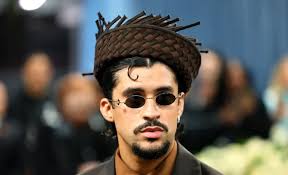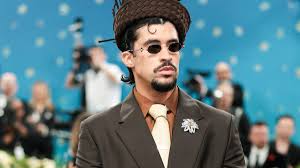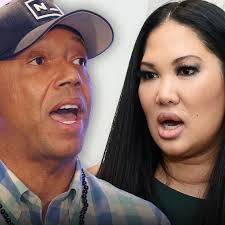Bad Bunny has never been one to shy away from difficult conversations. Whether it’s challenging colonial attitudes toward Puerto Rico, embracing gender fluidity through fashion, or taking a stand against systemic injustices, the reggaeton superstar has made it clear — his art goes beyond entertainment. This Fourth of July, he proved it once again.
On July 5, the Grammy-winning Puerto Rican artist released the music video for “NUEVAYoL,” a bold, politically charged piece from his latest genre-bending album DeBÍ TiRAR MÁS FOToS. Far from a typical summer bop, the video offers a profound commentary on immigration, identity, and the immigrant community’s essential role in the American story. It’s a statement of pride, defiance, and unity — one that resonates far beyond his native island.
From the stylized visuals to the biting political message, Bad Bunny is using his voice, once again, to spark change and celebrate resilience. Here’s why “NUEVAYoL” is more than just a song — it’s a cultural call to action.
While fireworks lit up the skies over the U.S., Bad Bunny lit up social media with the surprise release of “NUEVAYoL.” But instead of offering red-white-and-blue platitudes, he served a biting critique of the very system those colors represent.
The music video opens with scenes that reflect the everyday life of immigrant families, interspersed with urban shots of New York — a place long known as a hub for Puerto Ricans and other Latin American communities. But the real moment of shock comes at the end.
Viewers hear a voice that unmistakably mimics Donald Trump. In an ironic twist, the voice announces:
“I made a mistake. I want to apologize to the immigrants in America… This country is nothing without the immigrants. This country is nothing without Mexicans, Dominicans, Puerto Ricans, Colombians, Venezuelans, Cubans…”
The line isn’t real, of course. It’s satire — but powerful satire. It’s a reimagining of what America should sound like, from the perspective of its most marginalized voices.
What makes “NUEVAYoL” especially powerful is its use of symbolic imagery. At one point in the video, a Puerto Rican flag is placed across the forehead of the Statue of Liberty — a striking visual that speaks volumes.
By doing this, Bad Bunny effectively reclaims one of America’s most iconic symbols of freedom and positions Puerto Rico, and by extension all immigrants, as part of that vision. It’s a bold redefinition of patriotism, where liberty isn’t reserved for the privileged few but extended to those who have historically been excluded.
He ends the video with the message:
“Juntos Somos Más Fuertes” — Together We Are Stronger.
This is not just a feel-good slogan. In the context of recent political events, it’s a direct counter-narrative to policies that isolate, detain, and criminalize immigrants.
This artistic protest isn’t happening in a vacuum. Bad Bunny’s message lands at a time when immigration in the U.S. is once again at the center of national controversy.
On July 3 — just two days before the video dropped — Congress passed what critics are calling the “Big Beautiful Bill,” a Trump-backed measure allocating a staggering $45 billion for immigration detention centers and another $30 billion for expanding ICE operations. Since early June, dozens of ICE raids have been reported across Southern California.

It’s no coincidence that Bad Bunny chose this moment to release “NUEVAYoL.” His message is clear: while the political establishment is busy building walls and cages, the culture he represents is building bridges, creating community, and claiming space.
While DeBÍ TiRAR MÁS FOToS is politically potent, it’s also deeply personal. The 17-track album is a celebration of Bad Bunny’s Puerto Rican heritage — a musical love letter to the island that raised him.
Incorporating traditional genres like plena, salsa, and jíbaro into his signature urbano sound, Bad Bunny creates a tapestry of Boricua identity. The collaborations on the album are a who’s who of Puerto Rican talent — RaiNao, Omar Courtz, Dei V, and Los Pleneros de la Cresta all make appearances. This isn’t just about honoring Puerto Rico’s past; it’s about spotlighting its future.
During an interview with Variety, Bad Bunny shared how important it was for him to create a space that truly honors his roots:
“The idea for the residency was always there, for as long as I can remember… It became difficult to ignore, the more time passed.”
That residency — No Me Quiero Ir De Aquí — is set to be one of the most ambitious concert series in Latin music history. From July 11 to September 14, Bad Bunny will perform to an estimated 600,000 fans at the Coliseo de Puerto Rico. Every show is already sold out.
But this isn’t just about music or even politics. It’s about tourism, economy, and cultural diplomacy.
According to Glorianna Yamín, vice president of marketing at Discover Puerto Rico, the concert series is triggering a “peak period for tourism.” Hotels, restaurants, and local businesses are gearing up for a surge in visitors, many of whom are coming not just to see a concert but to connect with the culture.
It’s a stark contrast to what’s happening halfway around the world. In Hawaii, tourism is being reexamined due to overcrowding, traffic, and environmental strain. Officials there are now focusing on drawing visitors who are committed to sustainability and cultural respect — something Puerto Rico is now keenly aware of.
Yamín explains:
“We are making sure that we’re educating those visitors; first, so they behave as they should, but also so they’re intrigued about our culture, our music, our history, our gastronomy … things Bad Bunny touches on in his album.”
Bad Bunny’s art, in that sense, is functioning on multiple levels: it’s music, it’s protest, it’s education, and it’s tourism marketing — all rolled into one.
Perhaps the most intriguing part of this entire moment is what’s not happening: a U.S. leg of Bad Bunny’s upcoming world tour.
Set to begin November 21 in Santo Domingo, Dominican Republic, the tour will traverse Latin America, Australia, Japan, and Europe — including cities like London, Marseille, Stockholm, and Milan. But the United States is conspicuously missing from the itinerary.
For a global artist whose fame was partly built through U.S. mainstream success, this is a loaded omission. While no official reason has been given, many fans and critics interpret it as yet another political gesture — a quiet protest against the current treatment of immigrants and Puerto Rico’s status as an unincorporated U.S. territory.
It raises a question: What does it mean when an American citizen, born in a U.S. territory, decides not to perform in the country that claims to represent freedom?
This is not the first time Bad Bunny has used his platform for political purposes. During the 2019 protests that ousted Puerto Rico’s Governor Ricardo Rosselló, he joined fellow artists Residente and Ricky Martin in calling for accountability. In 2020, he used his Super Bowl performance to highlight violence against women and trans people in Latin America. He’s openly challenged machismo in Latin culture, showing up to red carpets in skirts and painting his nails in defiance of gender norms.
Now, with DeBÍ TiRAR MÁS FOToS and “NUEVAYoL,” he’s continuing that tradition — showing that culture can be a weapon, and that music can be a revolution.

In a year filled with political division, rising xenophobia, and social upheaval, Bad Bunny offers something radical: unity.
By uplifting the voices of immigrants, centering Puerto Rican identity, and reimagining what America could be, he challenges listeners to see beyond borders. “NUEVAYoL” isn’t just a protest against Trump-era policies — it’s a vision of a more inclusive future, where belonging isn’t dictated by papers or passports, but by shared humanity.
And in doing so, Bad Bunny reminds us of a simple truth: Juntos Somos Más Fuertes. Together We Are Stronger.



